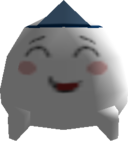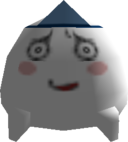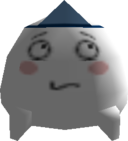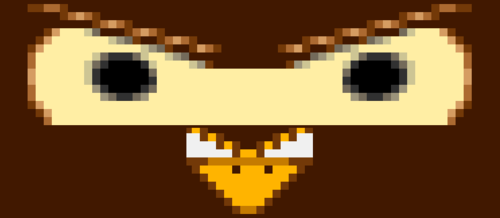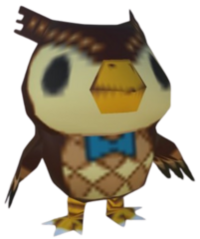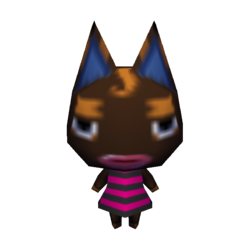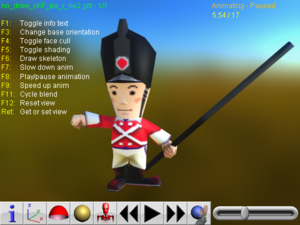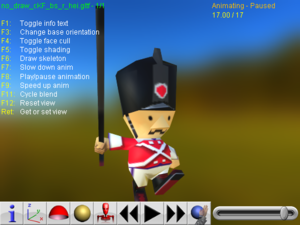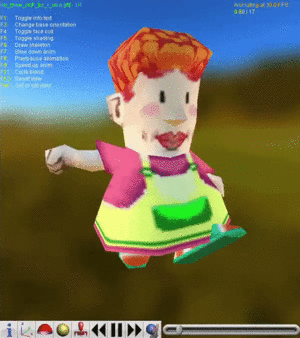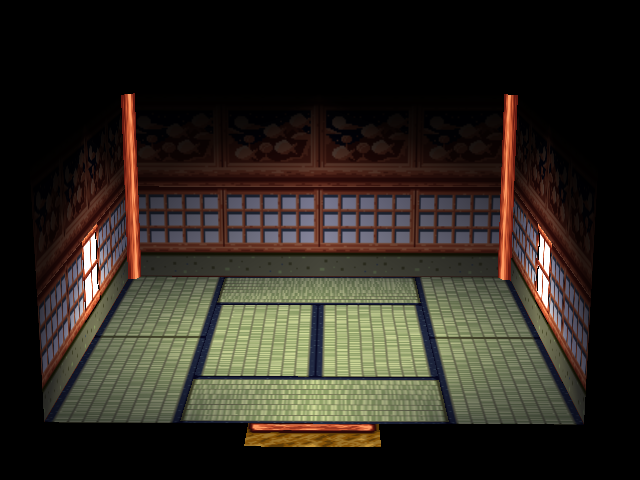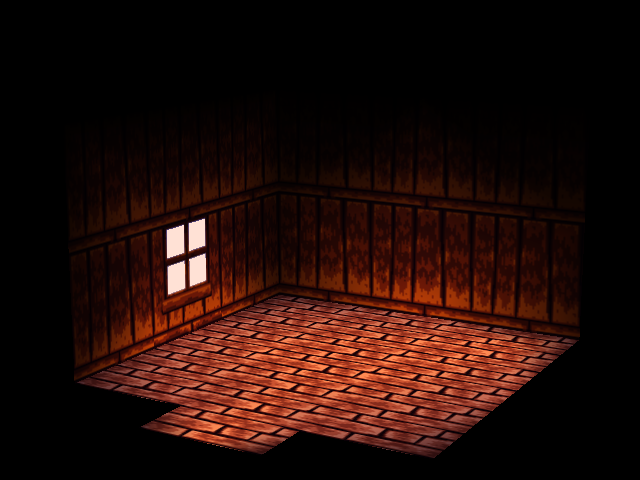Development:Doubutsu no Mori
This page details development materials of Doubutsu no Mori.
| This page or section details content from the July 2020 Nintendo Leak. Check the July 2020 Nintendo Leak category for more pages also sourced from this material. |
| To do: There is way more than what's documented here. A good starting point would be Nookipedia
|
On July 25, 2020, a huge amount of source material was leaked. A few of the leftovers have traces to when the game was still in its RPG phase.
Contents
Unused Inventory Icons
Many unused and earlier inventory icons were found in the leak of the unreleased iQue files for Doubutsu no Mori. None of them exist in any released version of the game.
| Name | Image | Notes | Filepath |
|---|---|---|---|
| sickle | Likely the icon for the unused sickle handheld item found in the data for Animal Crossing. | d1\routefree\bbgames\depot\forest\data\shape\DMA_MAKE\SUBMENU\ITEM\SICKLE | |
| ueki | |||
| seed | Likely the original flower seed icon. | ||
| nae | "nae" means seedling. Likely the original sapling icon. | ||
| nuts | Early fruit item, based on a chestnut; replaced with the cherry in the final game. Nuts would not appear as obtainable fruit until Animal Crossing: New Leaf, which featured lychee nuts (despite their name, coconuts are not true nuts). | ||
| kusuri | "kusuri" means medicine, which wouldn't appear as an item until Doubutsu no Mori e+. | ||
| furniture | Likely the original furniture icon. | ||
| carpet | Likely the original carpet icon. | ||
| wall | Likely the original wallpaper icon. | ||
| binsen | "binsen" means paper or stationery. Likely the original stationery icon. | ||
| cloth | associated with string "かえぬの" (kaenuno), which means spare cloth. Likely the planned means of creating custom designs in-game before the mechanic's scrapping in Doubutsu no Mori and the incorporation of Able Sisters in Doubutsu no Mori +. | ||
| fuku2 | "fuku" means clothes. Likely the original clothing icon. | ||
| minidisk | Likely the original icon for K.K. Songs. MiniDiscs were a popular music format in Japan, with their magneto-optical design and portability allowing them to be repeatedly recorded over and shared like Compact Cassettes with the audio quality and playback durability of CDs, indicating that the original concept for airchecks was that they would be recorded by K.K. onto store-bought blank MiniDiscs. | ||
| cd | Replaced with the handkerchief quest item in the released game. Interestingly, this graphic, albeit somewhat updated can be found in an early screenshot for Animal Crossing: Wild World. | ||
| guitar | Replaced with the camera quest item in the released game. | ||
| megane | "megane" means eyeglasses. Replaced with the glasses case quest item in the released game. | ||
| turi | Likely the original fishing rod icon. | ||
| ayu | "ayu" is sweetfish. Likely 1 of 3 potential icons to be used for all fish. | ||
| ayu | "ayu" is sweetfish. Likely 1 of 3 potential icons to be used for all fish. Of note is that the icon resembles the unused blue fish item found in the data for Animal Crossing. | ||
| ayu2 | "ayu" is sweetfish. Likely 1 of 3 potential icons to be used for all fish. | ||
| pet | Likely an icon for fished trash. "pet" refers to the common abbreviation of polyethylene terephthalate, the type of plastic used in disposable water bottles. | ||
| mushikago | "mushikago" means insect cage. Likely the icon to be used for all bugs. The final game includes a remnant of this, in which captured bugs appear as plastic cages in the overworld. |
NPCs
Special Characters
Wisp
Wisp was planned for Doubutsu no Mori, but was removed like Blathers. The design of his face was later changed in the GameCube Versions.
Blathers
An early texture of Blathers' face, as well as the final model using the full early texture. This earlier design resembles the appearance of Celeste with the black eyes. Additionally he has a blue bowtie, rather than his green bowtie in the final game.
Scrapped villagers
CAT13
An unused texture for a cat villager is also present in development files. This villager uses the ID CAT13; all data was seemingly scrapped for the villager except the texture. Due to the original intention that villagers would not change clothes, the models still have clothes on them; CAT13 appears to be wearing a Beatnik Shirt. Due to Doubutsu no Mori e+ effectively supporting custom villagers through its e-Reader functionality, CAT13 (who has been nicknamed "Catty") can be imported into the game, providing the model seen above. (Note initial attempts to port CAT13 when she was discovered are incomplete, with only the face textures fully implemented; the above uses all textures.)
In Animal Crossing, the ID CAT13 (or CATD in hex) was given to Ankha. This is not to be confused with the system used by all games from Animal Crossing: Wild World onward to identify villagers, in which cat13 designates Stinky, who was CAT8 in Doubutsu no Mori and its later versions.
BEA3
The villager with ID BEA3 (a bear villager) has no presence at all in any data, with their entire folder deleted. This ID was not reused in Animal Crossing.
Early NPC Models
To do:
|
Several unused models of characters that do not show up in the game can be found in internal development data. What's notable about these is that they are all human characters, likely originating from the development period in which the game was a dungeon crawling RPG. Aside from the player, no other humans are found physically in the final game.
Two soldiers, each fittingly referred to as Soldier1 and Soldier2 respectively. They were likely repurposed into Copper and Booker in the final game, who would reuse the British redcoat motif in Wild World and City Folk (with some modifications).
A nice lady, complete with some animations of her walking and (presumably) holding a basket. Internally referred to as 'oba.' Interestingly, in the final game, Joan's sleeping model is internally referred to as 'Sleeping_Obaba,' (sleeping aunt in English). Perhaps this woman eventually became Joan when the game became focused on animals.
Spaceworld 2000 Title Screen
| Spaceworld 2000 | Final |
|---|---|
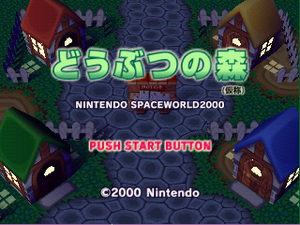
|
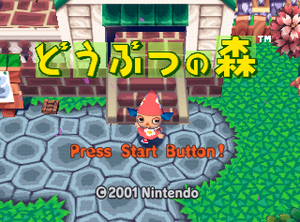
|
Found among the source code is a screenshot of the original title screen used during the Spaceworld 2000 presentation, being very different from the final version.
- The title is completely different, being more green instead of yellow.
- The text 'NINTENDO SPACEWORLD2000' can be seen below the title.
- 'PUSH START BUTTON' was changed to 'Press Start Button!' in the final game, and also had its font changed.
- The copyright date was changed from 2000 to 2001, and is also in a different font.
- Instead of focusing on a player character wandering around town, the title screen instead depicts a static shot of the four players' houses in Acre B-3.
Unused Text
Found within internal assets is this string of unused text.
| Japanese | English (translated) |
|---|---|
| ありがとう。
では <Player>ちゃん、 みじかいじかんだけど たのしんでくださいな、 <Catchphrase>。 |
Thanks.
Well <Player>, I hope you have fun in the short time you have, <catchphrase>. |
Rooms
Several rooms were also found within internal assets.
Test Room
What appears to be a test room of sorts, featuring an early version of the tatami floor (lacking the wooden border) and a wallpaper that doesn't appear in the final game.
Nook's Cranny
An early version of Nook's Cranny, looking a fair bit darker and featuring substantially different flooring and wallpaper. Of note is that this design differs not only from the final game, but also from the Spaceworld 2000 demo, as a screenshot of the latter shows yet another set of flooring and wallpaper resembling a log cabin.
NES Games
Present in the internal assets for the game are references to several NES games that do not appear anywhere in the final. These include Arkanoid, F1 Circus, and, bizarrely, what appears to be Hummer Team's unlicensed port of Tekken 2. Several other games by Jaleco, Namco, and Taito are also mentioned throughout.
